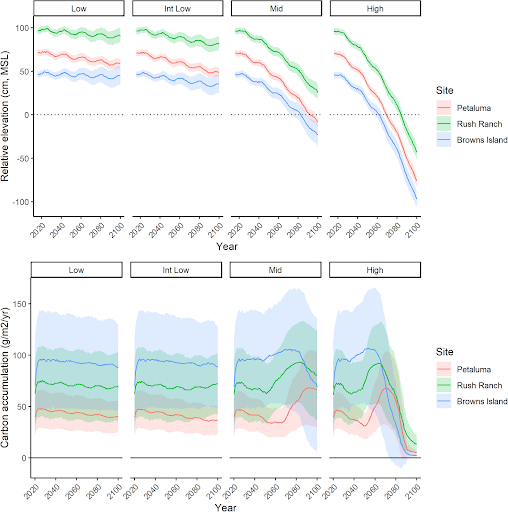
To ensure the resilience of coastal wetlands, we must understand how sea level rise will impact these ecosystems and assess different protection strategies. Often, models predicting whether a marsh will exist in the future provide “yes or no” answers, based mostly on wetland elevation and sea level rise scenarios. An NCCOS-funded study incorporated uncertainty and additional coastal processes that affect ecosystem change into a marsh model that helps explain how likely it is that the marsh will survive into the future (Figure 1). This type of information can help coastal decision makers select management actions that are more likely to succeed, enhancing the resilience of coastal communities.
Marshes provide a number of benefits, including storm and flood attenuation, improved water quality, carbon sequestration, and diverse wildlife habitat. With sea level rise, the options we have for protecting tidal wetland systems include increasing sediment accumulation in the marsh to raise elevation, or ensuring land is available for natural migration of the marshes to higher ground. The precise timing of marsh migration and loss is uncertain; incorporating probabilities into models helps offer some indication of the uncertainty of different outcomes. In addition, this model now considers the role of sea level rise in salinity intrusion, plant community transitions, and sediment availability to better inform decisions around wetland restoration and adaptation in the coming decades.
This approach adds new functionality to existing marsh models and is transferable across other tidal wetland ecosystems. This study was supported in part by the NCCOS Effects of Sea Level Rise (ESLR) project “Refining Ecosystem Model Inputs for Sea Level Rise Vulnerability in the Sav Francisco Bay Estuary”, led by Oregon State University and the U.S. Geological Survey.
